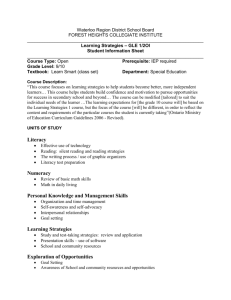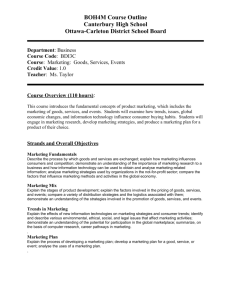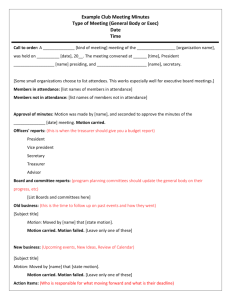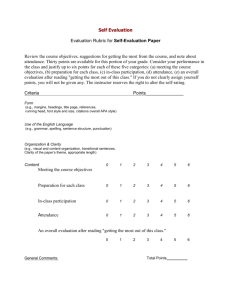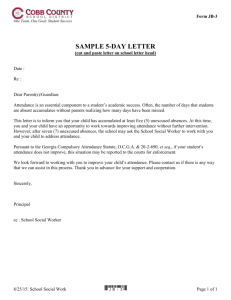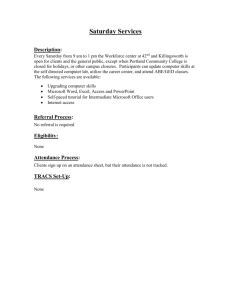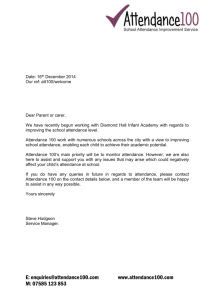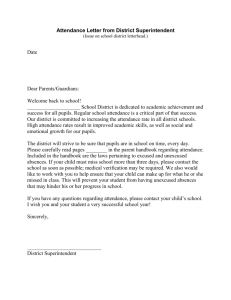Guidelines for Online Courses
advertisement
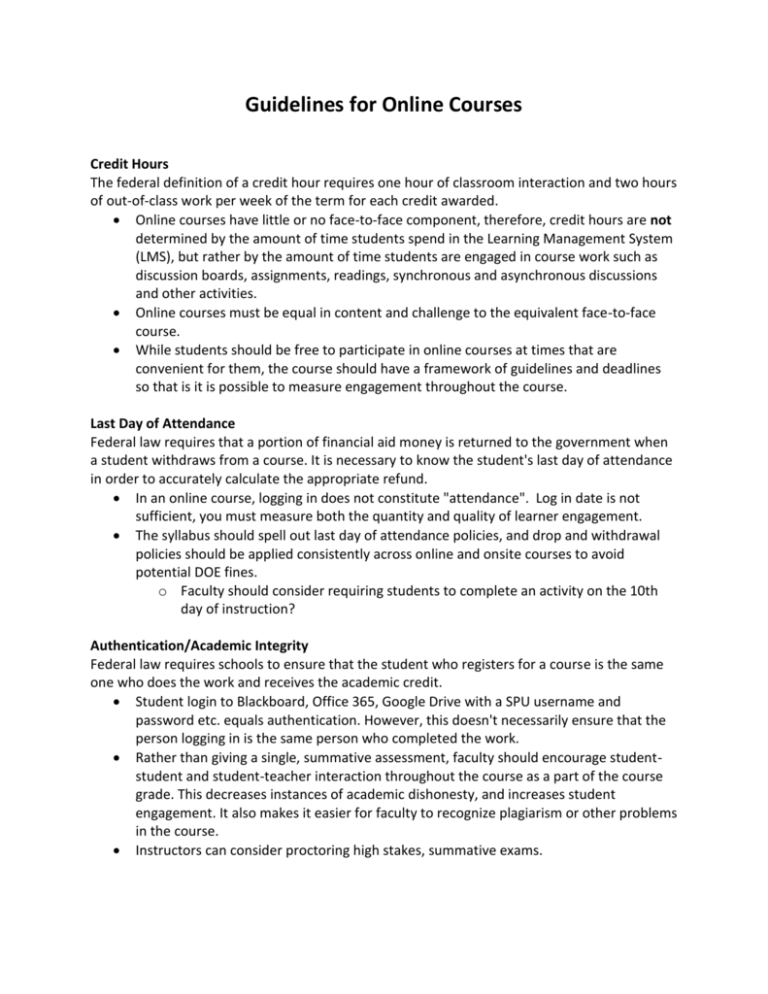
Guidelines for Online Courses Credit Hours The federal definition of a credit hour requires one hour of classroom interaction and two hours of out-of-class work per week of the term for each credit awarded. Online courses have little or no face-to-face component, therefore, credit hours are not determined by the amount of time students spend in the Learning Management System (LMS), but rather by the amount of time students are engaged in course work such as discussion boards, assignments, readings, synchronous and asynchronous discussions and other activities. Online courses must be equal in content and challenge to the equivalent face-to-face course. While students should be free to participate in online courses at times that are convenient for them, the course should have a framework of guidelines and deadlines so that is it is possible to measure engagement throughout the course. Last Day of Attendance Federal law requires that a portion of financial aid money is returned to the government when a student withdraws from a course. It is necessary to know the student's last day of attendance in order to accurately calculate the appropriate refund. In an online course, logging in does not constitute "attendance". Log in date is not sufficient, you must measure both the quantity and quality of learner engagement. The syllabus should spell out last day of attendance policies, and drop and withdrawal policies should be applied consistently across online and onsite courses to avoid potential DOE fines. o Faculty should consider requiring students to complete an activity on the 10th day of instruction? Authentication/Academic Integrity Federal law requires schools to ensure that the student who registers for a course is the same one who does the work and receives the academic credit. Student login to Blackboard, Office 365, Google Drive with a SPU username and password etc. equals authentication. However, this doesn't necessarily ensure that the person logging in is the same person who completed the work. Rather than giving a single, summative assessment, faculty should encourage studentstudent and student-teacher interaction throughout the course as a part of the course grade. This decreases instances of academic dishonesty, and increases student engagement. It also makes it easier for faculty to recognize plagiarism or other problems in the course. Instructors can consider proctoring high stakes, summative exams.


